

| Verrocchio had a number of challenges when he was commissioned by the Mercatanzia (the merchant's court) to design a sculpture for the niche they owned. First, he was working in the shadow of Donatello, Ghiberti, and Nanni di Banco, who had completed niche sculptures for Orsanmichele in the first part of the century. Second, his work would replace Donatello's Saint Louis of Toulouse, which had been moved from this niche to Santa Croce. In addition, all the niche sculptures, with the exception of Nanni di Banco's Four Crowned Saints, were single figures, and none had an implied narrative. Verrocchio met this challenge with a clever solution. He designed his group on two different levels--Christ is higher--and the group projects forward. Christ's hand is extended outside the niche and St. Thomas stands on the ledge of the niche. | ||
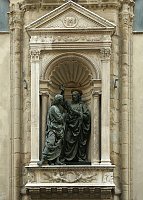 |
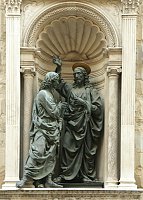
|
In order that the niche could accommodate the two figures, Verrocchio designed them without backs or as hollow bronze shells. These two photographs were taken in 2006 and the sculpture is probably a copy of the original. (Unless noted, the other photos were taken in the late 1970s.) |
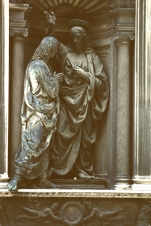 |
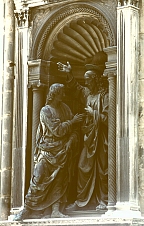 |
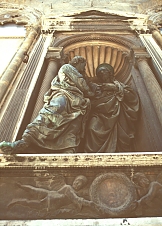 |
| Verrocchio's work illustrates the dramatic moment in John 20:24-29. Earlier Thomas doubted the reports of the disciples who had seen the reborn Christ, saying "Unless I see the mark of the nails on his hands, unless I put my finger into the place where the nails were, and my hand into his side, I will not believe it." A week later he saw Jesus, who said to Thomas: "Reach your finger here; see my hands. Reach your hand here and put it into my side. Be unbelieving no longer, but believe." Thomas responded, "My Lord and my God!" Although the faces of Christ and Thomas are calm, the drapery accentuates the dramatic intensity of this moment. The folds of Christ's drapery are large and sober whereas Thomas's robe falls in small, nervous folds, indicating his emotional agitation. The hands as well (or the space between them) add to the emotion. The beauty of Christ's face has been much admired as well. | ||
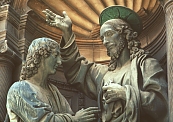 |
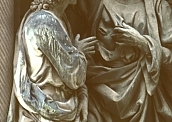 |
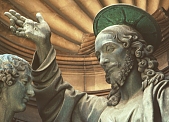 |
| These two photos were taken in 2006 and the sculpture is probably a copy of the original. | 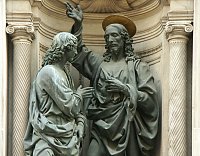
|
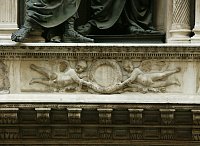
|
 Click here to return to Introduction on Orsanmichele.
Click here to return to Introduction on Orsanmichele.
See also Verroccchio's Equestrian Monument of Bartolommeo Colleoni.
 Click here to return to index of art historical sites.
Click here to return to index of art historical sites.
 Click here to return to index of artists and architects.
Click here to return to index of artists and architects.
 Click here to return to chronological index.
Click here to return to chronological index.
